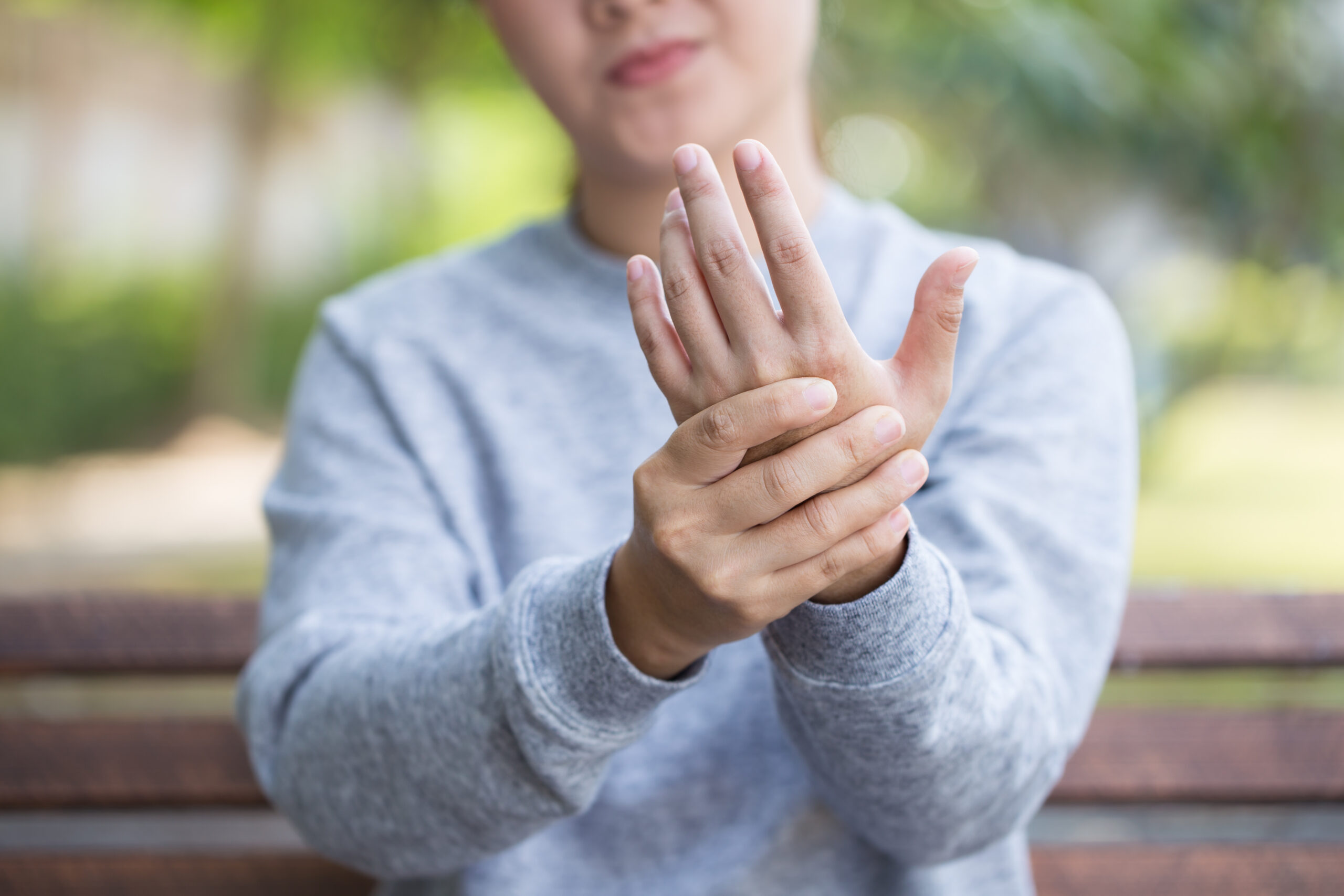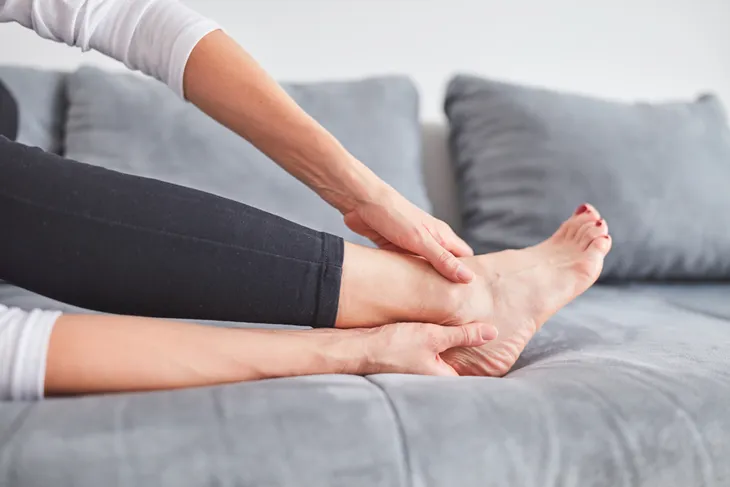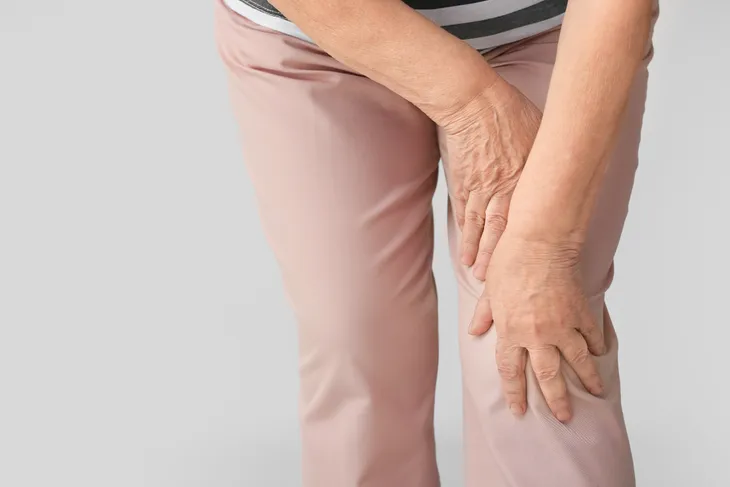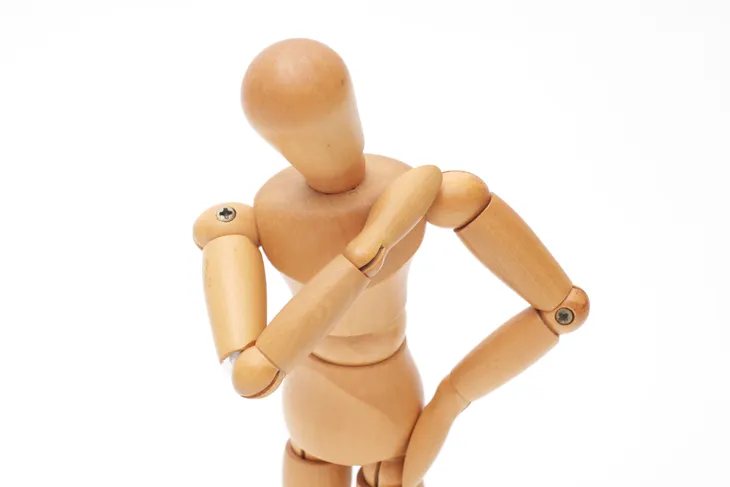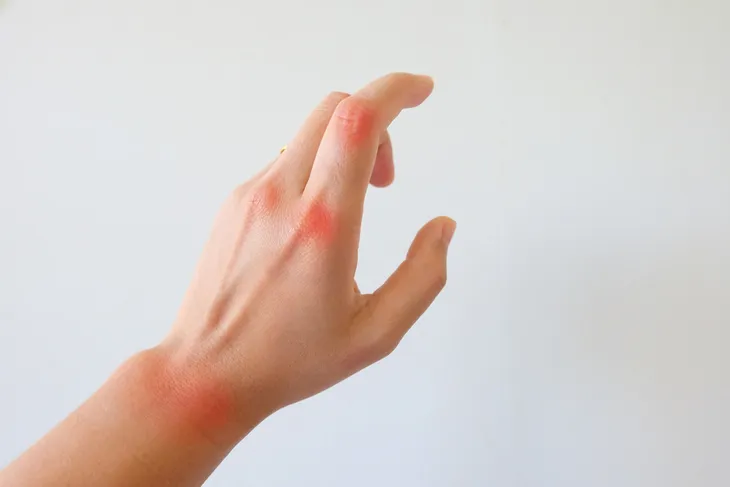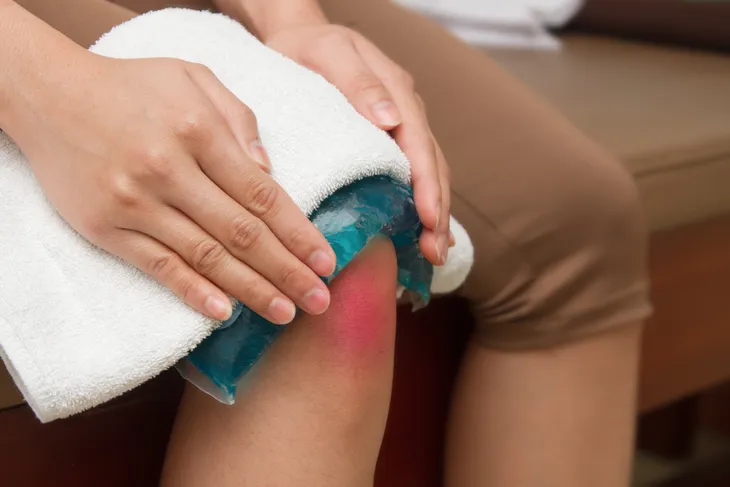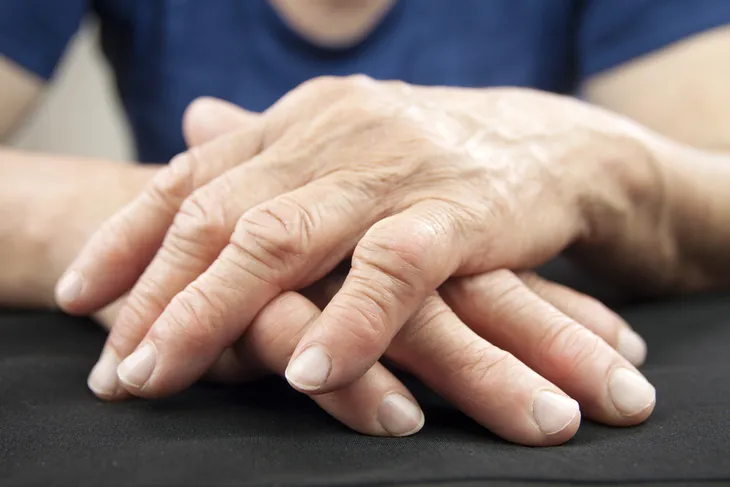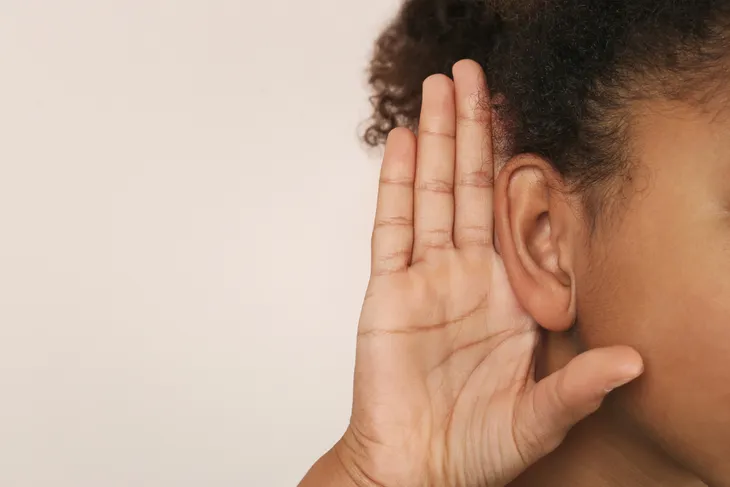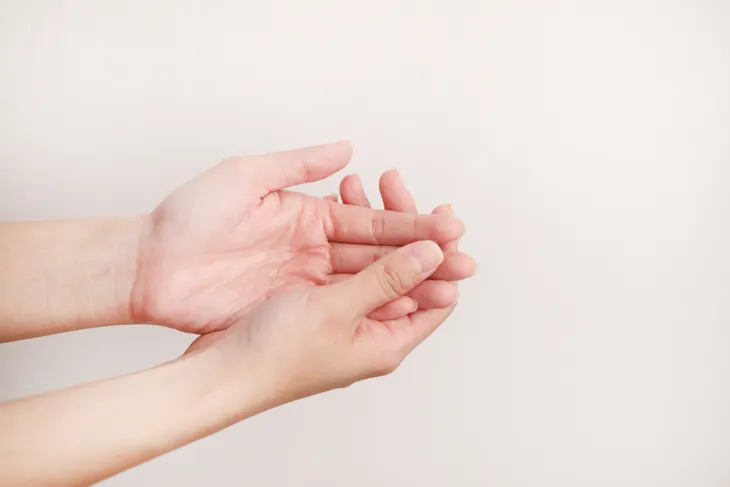- Arthritis is the inflammation or swelling of one or more joints. There are over 100 different types of arthritis and related conditions.
- It often develops when the cartilage, which is supposed to cushion our bones, becomes worn down and can’t function.
- Some early warning signs of arthritis are joint pain, swelling, tenderness, fatigue, malaise, stiffness, and even a fever.
- This disease is progressive, so it’s important to go see a doctor if you suspect you are developing arthritis.
Arthritis isn’t a disease on its own. There are over 100 different types of arthritis and related conditions, says the Arthritis Foundation. They affect people of all ages, races, and genders. It’s the leading cause of disability in the U.S. and most common among women. While it’s not necessarily an aging disease, some types do affect more older people.
While it depends on the type, the Centers for Disease Control and Prevention (CDC) describes arthritis as the inflammation or swelling of one or more joints. It affects not only the joints, but the tissues around the joint and other connective tissues. It can cause an array of symptoms, but the following are the first initial signs of arthritis which should prompt a visit to the doctor…
Something Feels ‘Off’
This symptom is often associated with osteoarthritis, which is by far the most common type of arthritis, according to the Arthritis Foundation. Jeffrey Zarin, MD, an orthopedic surgeon at the Cedars-Sinai Kerlan-Jobe Institute in Los Angeles talked to Women’s Health and said his patients will often note that “something doesn’t feel right about the way the joint moves.”
It could be that your knee feels a little more wobbly than normal or an elbow is just not moving as smoothly as it once was. It’s important to be in tune with your body and make note of any changes when they arise. Any of these examples could be signs of arthritis.
Joint Pain
Joint pain is surely the first thing most people think of when considering arthritis. And for good reason! It’s one of the most common and universal symptoms across all types of arthritis. According to Healthline, pain is the first sign of arthritis and is referred to as arthralgia. “This can feel like a dull ache or a burning sensation,” writes the source. And it often starts after the joint is used a lot.
For example, they might hurt after gardening or walking up a flight of stairs. “This is due to wearing down of joints and muscle tightness,” says Barbara Bawer, MD, a family medicine physician at The Ohio State University Wexner Medical Center. “Cartilage becomes thinner, more dried up, and stiff.”
If you’re experiencing joint pain, try and take note of how long the pain has been going on, if it came on suddenly or gradually. These are all questions a doctor might ask, explains VeryWell Health. They might also want to know if the pain gets worse after physical activity or goes away when resting.
Pain in a Previously Injured Joint
Most people are unable to get through life without a couple bumps and bruises along the way (some more than others). While not everyone will experience a broken bone, many have sprained an ankle or wrist from either sports or just a clumsy moment. Unfortunately, if a person has previously injured a joint (even if it was just a sprain), they have an increased risk for developing arthritis.
“Trauma to a joint in the past speeds up the wear and tear of the joint and therefore the destruction of cartilage,” says Dr. Bawer to Women’s Health. In fact, if a joint that was previously injured starts hurting again, it could be an early indicator of osteoarthritis. If this happens, go see a doctor to determine what the source of this unexpected pain is.
Stiffness in Joint
It’s never a good idea to sit in one position for long periods of time, but for people who work at a desk or even during travel, it can be hard to avoid. If a person is regularly feeling stiffness in their joints, it could be an early warning sign of arthritis.
Stiffness occurs as a result of synovial fluid, the thick liquid that exists between the joints and bones to reduce friction. Dr. Bawer tells Women’s Health that when a person has been inactive for a long period of time, this fluid it becomes gelatinous. Don’t worry, it doesn’t last all day. Once a person gets up and moving again it “normalizes into a thinner liquid with movement,” adds Dr. Bawer.
Feeling Unwell
There are many reasons a person can start to feel unwell. They could be coming down with a cold or the flu, or possibly just ate something that didn’t agree with them. Basically, arthritis isn’t usually the first thing that comes to mind when someone starts to feel ill or just not themselves. But according to VeryWell Health, it can be one of the warning signs.
Malaise is an early sign of arthritis and is described as a generally ill feeling or lack of well-being. “Malaise can most certainly occur if living with unrelenting pain, inflammation, or loss of mobility,” writes the source. You’d start to feel this symptom as a result of other physical symptoms that accompany arthritis. So it’s not about simply being in a funk or bad mood, it’s a direct physical consequence of this disease.
Pain in the Morning
Since most people sleep for anywhere from 7 to 8-hours each night, it can take a little while to get the body warmed up and moving in the morning. This is especially true as we age. If you’re feeling a lot of pain and stiffness first thing in the morning, it’s often a warning sign of osteoarthritis.
“When you sleep, the joints aren’t moving which can make them stiff and dried out,” says Timothy Gibson, MD, orthopedic surgeon and medical director of the MemorialCare Joint Replacement Center at Orange Coast Medical Center in Fountain Valley, Calif to Women’s Health. “Once you move the joint back and forth a few times, it gets fluid moving in the joint and makes it feel better.”
Tenderness in Joint
Similar to pain in the joint, someone developing arthritis might notice that their joints are becoming tender. This is most commonly associated with rheumatoid arthritis, an autoimmune disease that causes consistent inflammation.
Unlike osteoarthritis which is when the cartilage of the joints wears away, rheumatoid arthritis affects the membrane around the joints. “The membrane that protects and lubricates the joints becomes inflamed, causing tenderness,” writes VeryWell Health. You’ll notice tenderness, along with other symptoms like joint pain, joint effusion, swelling, warmth, and redness.
Fatigue
Similar to malaise, there are many different reasons a person feels fatigued and arthritis isn’t necessarily the first cause that comes to mind. However, it is a potential warning sign. We’ve all felt tired at some point, usually after a night of tossing and turning, but if you’re experiencing persistent or excessive fatigue, it might be worth investigating.
Any excessive fatigue can be the result of inflammation or other joint-related symptoms, says VeryWell Health. Chronic fatigue can accompany inflammatory types of arthritis because the body is working hard to fight the infection or injury. The Arthritis Foundation says fatigue places a big strain on people with rheumatoid arthritis, psoriatic arthritis, and osteoarthritis.
Warm Joints and Redness
It’s nice to feel warm, but if joints are becoming warm or hot it’s not necessarily a good thing. It could be a sign of inflammation, infection, or injury, says VeryWell Health. If it’s caused by arthritis, “warmth tends to suggest a more serious form of the disease, such as septic arthritis caused by a bacterial or fungal infection in the joint or reactive arthritis caused by a bacterial infection elsewhere in the body,” writes the source.
While redness on the skin might sometimes mean it’s warm, in this case the skin may turn red from inflammation. If your skin is turning red, go see a doctor. They can determine if it’s a sign of arthritis by performing specific tests, such as erythrocyte sedimentation rate and C-reactive protein. According to VeryWell Health, these tests will help pinpoint what the cause is behind the inflammation, and whether it’s a result of an inflammatory arthritis. Another cause could be a joint infection, warns the source.
Pain in the Butt
Arthritis is a pain in the butt…no literally. One of the first signs of arthritis might be pain in the buttocks area. If this occurs, it could mean that a person is coming down with arthritis in their hips. “The hip is a ball and socket joint that’s in the groin area,” says Dr. Zarin to Women’s Health.
“It’s super common that people feel like they pulled their groin and it turns out it’s arthritis,” she adds. So how do we tell the difference? Well, according to dr. Bawer, if the pain is a result of arthritis in the hips it will likely be more localized to the upper butt area, or upper and outer thigh.
Swelling
Swelling is a common side effect to injury or infection. It’s our body’s way of responding to pain. Thus, it’s not that surprising that it can also accompany or be a warning sign of arthritis. As the joints become painful, they might start to swell. Healthline explains that the swelling is a result of increased synovial fluid in the joint.
“Synovial fluid is natural and acts as a cushion and lubricant in a typical joint,” writes the source. However, if arthritis develops a person may begin to have too much synovial fluid which leads to joint inflammation. While swelling might sound like it’s not that harmful, it can be quite painful and make it hard to move around.
Fever
Experiencing a fever, but not fighting any kind of virus or infection? It could be one of the first signs of the on-set of arthritis, says VeryWell Health. While developing a fever is of course common among many different medical conditions, the source warns not to rule arthritis out of that list.
“A fever develops as the body raises its temperature to fight infection or in response to certain inflammatory forms of arthritis,” writes the source. It often appears in people with rheumatoid arthritis and because it’s not the first thing we think of, it can sometimes be overlooked as the cause. “Rheumatoid arthritis can affect multiple organs and causes widespread inflammation, leading to persistent, low-grade fevers,” warns VeryWell Health.
Skin Nodules
This won’t occur with every type of arthritis, but certain types are known to cause nodules or lumps near the joint. It’s unclear why these appear, but they’ve become a well known feature of rheumatoid arthritis.
According to VeryWell Health, 25-percent of people with this type of arthritis will develop these firm, non-tender nodules below the surface of their skin. They can range in size from being as small as a lentil or as large as a walnut. The source also notes that these skin nodules typically appear on the fingers, knuckles, elbows, forearms, knees, and back of the heels.
Hear or Feel a Grating Sound
Most of us have heard a little pop or crack in our joints once or twice before. It likely happens after sitting for an extended period of time. That’s totally normal! We’d even bet if you were to twirl your ankles right now you’d hear a couple snap, crackle and pops.
If the sound is more of a grating or even feels like that, it could be an early sign of arthritis. “This is due to the destruction of cartilage on bones and narrowing of the space between the two bones,” says Dr. Bawer to Women’s Health. While it makes us cringe to even think of the sound of grating joints, it doesn’t always hurt. “Sometimes it hurts; sometimes it doesn’t hurt,” adds Dr. Zarin.
One-Sided Pain
For the most part, we all come with two hands and two feet — they are a matching pair! This is why it might be someone’s first assumption that if a person has arthritis in their hands, it occurs in both. However that’s not always the case. While it does sometimes occur in two pairs of joints, such as both hands or feet, it’s actually more common to have it in one or the other.
When it does happen asymmetrically, it’s usually rheumatoid arthritis. This type of arthritis is known for being symmetrical. It will affect both sides of the body, especially as it advances, notes Creaky Joints. “When people have pain in both wrists or both knees, you start to think about autoimmune diseases,” says Dr. Gibson when talking to Women’s Health.
